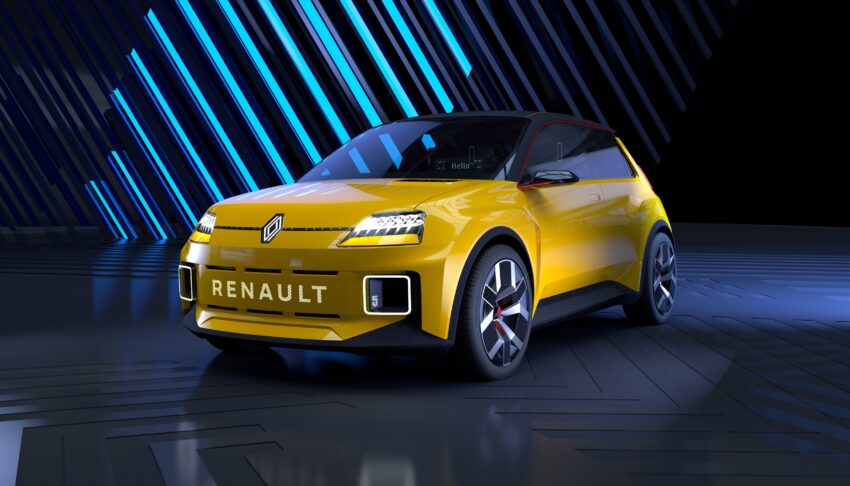Renault unveil details of their reborn super mini the all-electric Renault 5
The new Renault 5 will arrive in 2024 with a 134bhp front-mounted motor, which should provide it with similar performance to today’s Renault Zoe supermini.
Priced from around £18,500, the 5 has been confirmed to receive the new ePT-100kW motor, built at the Cléon engine factory which has produced powertrains for compact Renault models since the early 1960s.
The factory already produces the more potent ePT-160kW motor used by the Renault Mégane E-Tech Electric, and Renault has said it will be building more than one million EV units per year by 2025.
The firm has also confirmed plans for an ePT-200kW (268bhp) motor to start rolling down the line in 2027 but hasn’t yet said which model will receive this. It has been developed in partnership with engineering firm Valeo and is said to contain no rare metals.
The 5 was first shown as a concept at the Munich motor show last year. Set to be part of a major new plan to revive Renault’s fortunes, it will sit on the Renault Group’s new CMF-BEV platform for small electric cars.
Company boss Luca de Meo said the use of the new platform and revamped battery tech will enable the firm to sell the 5 for about 33% less than a current Zoe – which costs £27,505 at entry level.
Renault has also confirmed that the new 5 will use new powertrain technology and nickel-cobalt-manganese (NCM) batteries, which it claimed will dramatically reduce the cost per kWh to around £58 by 2030.
Renault added that the 5 will have a range of around 400km (248 miles).
The 5 Prototype takes styling and design cues from the Clio’s predecessor that Renault produced from 1972 to 1996. It’s set to be one of 14 new models – including seven EVs – that the French brand will launch by 2025.
Described as a city car, the model will replace the hugely successful Zoe EV as the firm’s compact electric hatch.
The original Renault 5 was launched in 1972, designed to fill the sizeable gap between the Renault 4 and the Citroën 2CV in the French small car market. Renault engineers were given a brief to develop a small car that would meet the needs of the widest range of the French car buying public possible.
The final design remained close to the original sketches from designer Michel Boue, with a slightly unconventional design. Under the bodywork, the R5 used many of the mechanicals from the Renault 4 and Renault 6 and featured front-wheel-drive with a choice of two engines.
The car was a huge hit: by 1980, it was one of the best-selling cars in the world. In 1976, it also spawned the Renault 5 Alpine (branded the 5 Gordini in the UK), one of the world’s first true hot hatches.
That was followed in 1980 by the R5 Turbo, a cult classic rally homologation special that featured a mid-mounted turbocharged engine in the passenger compartment behind the driver.
The second generation of the 5, known as the Supercinq, was launched in 1984 with a revised look and built on a new platform. It was effectively replaced as Renault’s lead supermini by the Clio, which was launched in 1990, although the Supercinq remained on sale in some markets until 1996.






